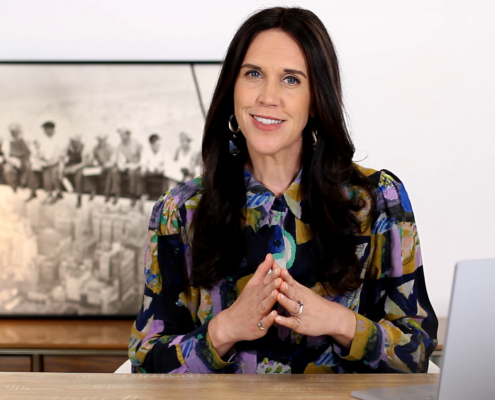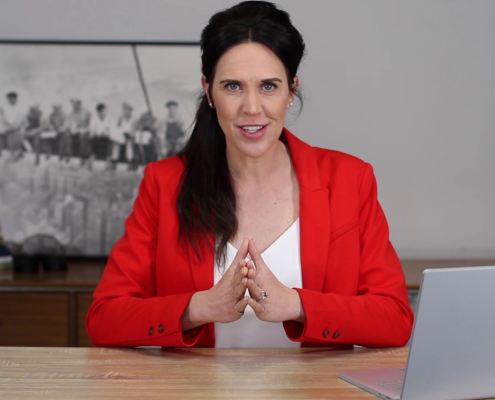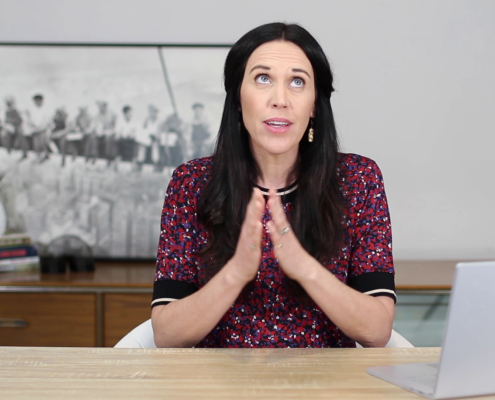What if I told you that if you were to exercise more, you would drink more water, eat better, sleep better, think more clearly, be less stressed and more productive.
You might say “I know all of this” … but do you know why?
I’m Samantha McGolrick and I help board members make a positive impact on the health, happiness and resilience of society and ultimately bring even more meaning and purpose to your board role through your effective leadership of safety, health and well-being.
Keystone Habits
Exercise is what Charles Duhigg referred to as a keystone habit in his book, The Power of Habit: Why We Do What We Do In Life And Business.
A keystone habit is a trigger for a number of other habits and habits can be particularly useful because once we’ve created a habit, we don’t even have to think about the activity or process, it just comes naturally.
We have habits everywhere in our lives, some are good and some are bad of course, but there are certain routines — keystone habits — that have the power to start a chain reaction in other areas of our lives or business.
Finding keystone habits in our organisations that start a positive chain of events are what we want to identify, because then of course people are acting in a certain way, and creating positive outcomes, without even thinking about it.
In his book, Duhigg refers to recognised safety leader, Paul O’Neill as an example of how safety should be considered a keystone habit. O’Neill was the former Chair and CEO of Alcoa in the late 80s and 90s and he attributes Alcoa’s significant increase in market share and annual net income, during his term as CEO and Chair, to his unrelenting focus on safety.
Safety as a Keystone Habit
While O’Neill doesn’t refer to safety as a keystone habit, both Duhigg and O’Neill recognise that a focus on safety was the impetus to a number of other system and workplace improvements, such as quality, productivity and innovation that ultimately helped Alcoa return to its status as a market leader.
O’Neill said that when employees are “treated with dignity and respect every day … it becomes a down payment on the notion that ‘nobody ever gets hurt here, because we care about our own commitment to our safety, and we care about the people we work with’. And from this commitment to employee health and safety, and respect for one another, he said a “discretionary energy” swells up into everything they do, and it creates a sense of pride about the organization they’re involved in.”
This is how safety triggers a cascade of other positive initiatives that lead to broader business outcomes.
When people feel that their employer cares about their safety, above all else, they want to return the favour so-to-speak. This discretionary energy that O’Neill refers to is acted on as a means of reciprocity and it goes beyond just looking at preventing incidents. Employees will give back to their employer the only way they know how, by putting their energy into making improvements to their work, to the business and caring for people the way they feel cared for.
For example, in a 2016 study of over 6,000 (6,207) truck drivers, it was found that their individual perceptions of the company’s climate for safety; that is, the focus they personally felt was given to safety through their experiences with the structures and systems in the organisation, were predictive of their levels of job satisfaction, engagement and subsequent turnover rate.
In a separate survey of CFOs, 60% of them found that the ROI on injury prevention programs and activities was $2 or more, and over 40% said productivity was the greatest benefit of an effective workplace safety program.
Reciprocity
In its simplest form, reciprocity is the exchange of resources between two people. You give me something, and you’ll get something in return.
It’s a widespread practice in organisations because research shows it improves productivity, promotes learning, and builds a climate and culture of trust. For more selfish reasons, reciprocity can also contribute positively to our personal reputation.
A specific form of reciprocity is generalised reciprocity, it’s the gift of giving without the expectation of an immediate return and unlike the simplest form of reciprocity, and generalised reciprocity involves three people, not two. As said by Give and Take, an organisation focussed on the success of business through fostering generosity and trust, “I help you, and you help someone else, and maybe that person will end up helping me (or someone else) some time in the future”.
Generalised reciprocity is the essence of “what goes around, comes around”.
Business Performance
And when principles of generalised reciprocity are implemented in the workplace, there are countless benefits, such as:
- Employee trust increases.
- Group cohesion intensifies.
- Stronger connections develop as generalized reciprocity unlocks hidden resources within employee groups.
- Employee emotions are lifted and improved (i.e. employees experience positive emotions that are good for our health and well-being; such as gratitude).
- Employees start to like co-workers, managers, and the organisation more (this increases our sense of belonging, which is also good for our health and well-being).
- Employees’ intrinsic motivation to fully engage in work is heightened.
- Efficiency and effectiveness of the exchange of resources within the company is greatly improved as employees are able to uncover new resources and solve more complex problems faster, resulting in saved time and money for the company.
Employees are acutely aware that in most jurisdictions their employer has a duty of care to ensure that they are healthy and safe at work, but they’re also well aware that many employers don’t prioritise employee health, safety and well-being, or at the very least, they don’t do it well. And employees are likely even more aware that many employers don’t focus on improving, over mitigating risks to, employee health and well-being.
Gratitude in the Workplace
Notwithstanding the obvious that a focus on safety, health and well-being is therefore a strategic advantage for any business because it’s blue ocean thinking, but when employees perceive that their employer cares about their health, safety and well-being, and they know this is not a regular occurrence, there’s even greater potential for their level of gratitude towards their employer to be higher and for them to develop a stronger desire to give back in some way or another. And research has found that gratitude is an even stronger motivator to give than the feeling of indebtedness or obligation!
If we apply the concept of generalised reciprocity to an organisation who prioritises employee health, safety and well-being, and employees feeling gratitude for that focus, then there is a lot of potential for employees to invest their time and energy into business improvements. Or we might even see people taking that feeling of gratitude and the positive emotions they’re feeling, into their home and into their community, giving you the opportunity to make a much broader impact on the health, happiness and resilience of society.
One of the reasons that safety is such a powerful keystone habit is because when an employer is seen to be looking after employees’ most basic human needs; that is, their psychological and physiological health, it’s a true demonstration that someone cares about us, that we are valuable contributors to the business.
On the flip side, if employees don’t perceive that their employer cares about their basic human needs, then they’re at a much greater risk of burnout which leads to cynicism and exhaustion and potentially injury, illness or a fatality.
Whatever you want to call it, reciprocity, keystone habit or discretionary energy … if you can do your part in the boardroom to create an organisational climate of safety, through your influence on for example incentives, policies and targets then you will create a ripple effect that will ensure that the people in your organisation feel valued and cared for and that their most basic human needs are seen as a priority.
If you do your part well, you bring the right knowledge, skill and mindset to your boardroom, to ask better questions, and understand the more complex connections between your decisions in the boardroom and safety, health and well-being outcomes, so that you can lead by example, then you are well on your way to making a positive impact on the health, happiness and resilience of society by contributing to people feeling valued and cared for.
As always, I hope this has helped you in your quest to know What to Ask and When to Act.
Be brave and stay true to your commitment to lead from the heart and I am confident you will reap the rewards.
All my best,
Sam
Be Curious. Be Kind. Be Brave.
Welcome!
I’m Samantha
I help board members succeed in the boardroom and make a positive impact on the health, happiness and resilience of society through their effective leadership and governance of safety, health and well-being.
RESOURCES
YOU MAY ALSO LIKE…
FEATURED CONTENT
[text-blocks id=”4249″ plain=”1″]








Wow, loved your article on the power of gratitude in the workplace. I’m a senior safety manager and I’m designing a senior manager safety walk template. It’s focussed on listening and asking questions that demonstrate to the worker that we care about them and their family. The focus on the safety walk is about making safety personal and compelling, not an inspection of the workplace.
I’m going to include some of your thoughts in the walk template so a very big thank you, love your work
Warm regards
John